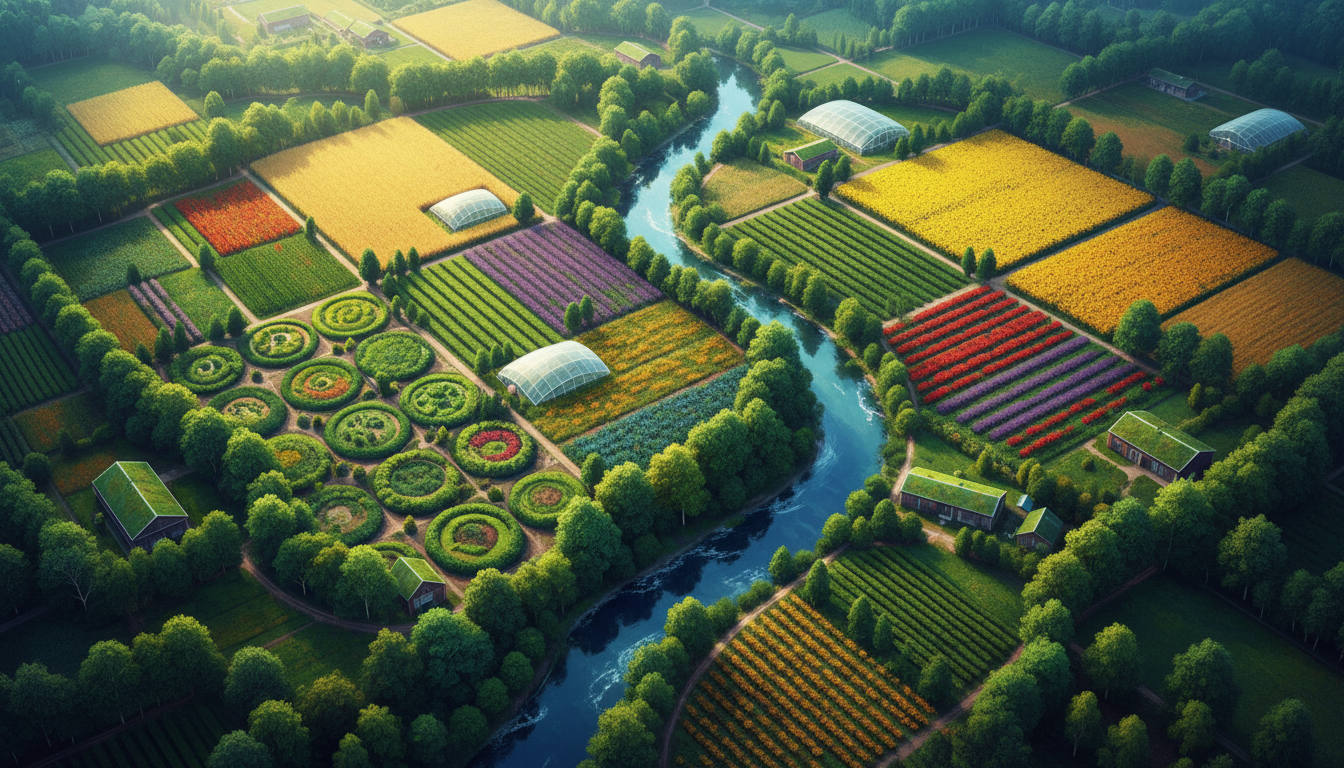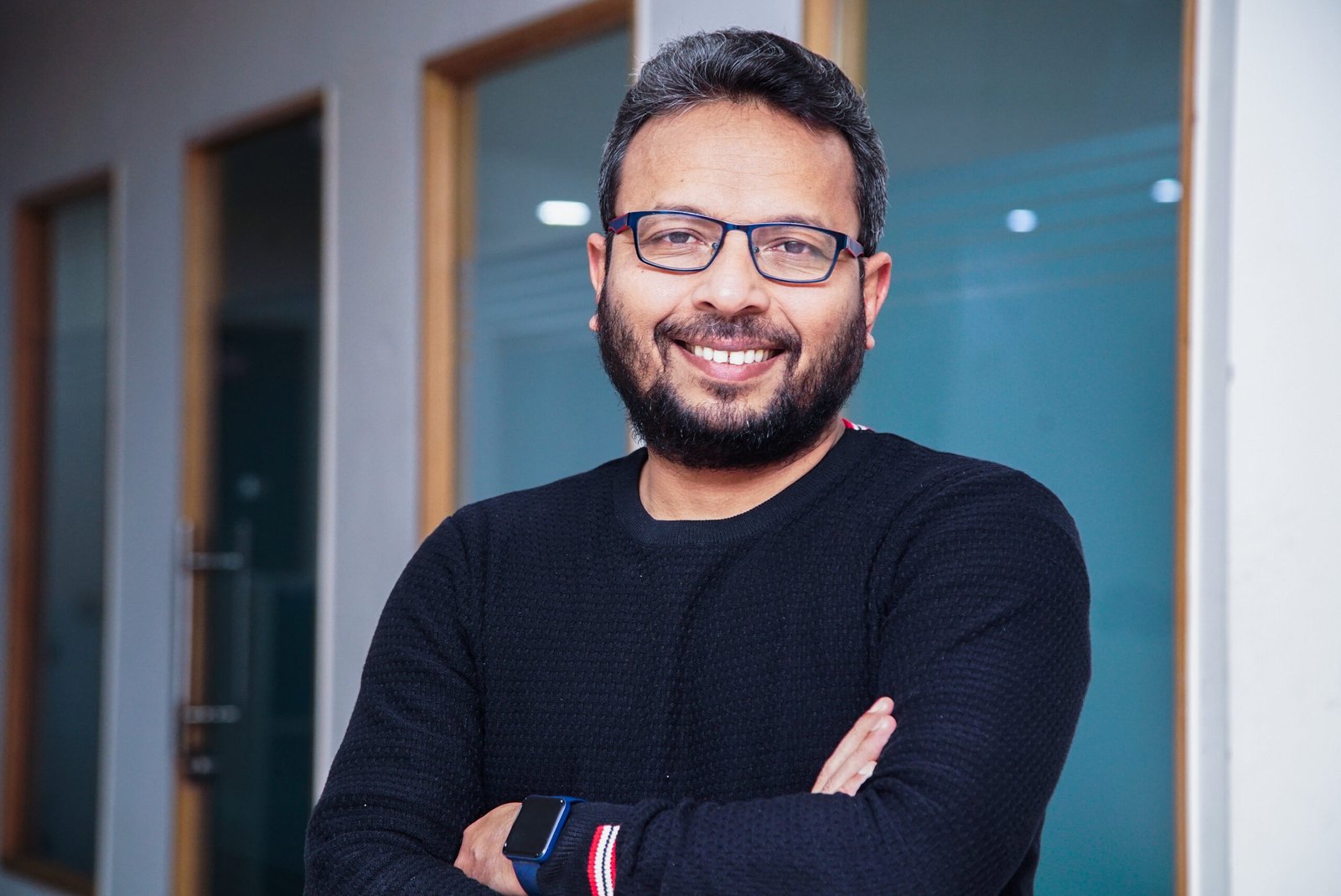Wednesday, 3 December 2025


In an exclusive interview with AgroSpectrum, Shenoy Mathew, Chief Sustainability Officer, Arya.ag, highlights how its SmartAG Award 2025 is more than recognition—it is validation of a climate-resilient grain commerce model already operating at national scale. By embedding sustainability into everyday storage, finance, and trading systems, the company is delivering measurable climate gains and income stability to over 800,000 smallholder farmers across 425+ districts.
Women-led Smart Farm Centres and technologies like the AryaQ AI grain quality device are transforming trust, transparency, and decision-making in rural markets. With patient, impact-aligned capital and global adaptation potential, Arya.ag is positioning itself at the nexus of profitability and planetary resilience. Looking ahead to 2030, the company envisions climate risk management and data-backed empowerment as built-in features of every grain transaction—setting a new benchmark for post-harvest systems globally.
From Recognition to Scale: Arya.ag has been recognised with the SmartAG Award 2025 for embedding climate resilience into India’s grain commerce. Awards are accolades—but how does this recognition translate into real-world acceleration for farmers, investors, and the broader agri-value chain?
The recognition affirms that climate resilience can be built into agricultural systems that already function at scale, without requiring parallel structures or new layers of complexity. What it brings is not just visibility, but validation of a model that integrates profitability, inclusion, and environmental responsibility into the everyday mechanics of post-harvest grain management.
Arya.ag has focused on embedding sustainability into existing systems, ensuring that storage, finance, and market access deliver environmental returns as naturally as they deliver economic ones. Over the past year alone, our decentralised network helped avoid post-harvest loss of more than 210,320 metric tonnes of foodgrain.
Preserving this grain prevented an estimated 233,603 tonnes of carbon emissions, conserved 91.4 billion litres of water, and eliminated the need for 16,826 tonnes of fertiliser. These outcomes are not incidental, they are a direct result of improving storage and market access for farmers across more than 425 districts.
For farmers, this translates into fewer distress sales and greater flexibility in timing their transactions. For investors, it signals a scalable, data-driven model that aligns impact and return. And for the broader agri-value chain, it shows that climate responsiveness does not have to rely on specialised interventions, it can emerge through operational efficiency and deeper participation from the smallest actors in the system.
The Smallholder Lens: India’s agricultural backbone remains smallholder farmers, many of them climate-vulnerable. How do Smart Farm Centres bridge the gap between hyperlocal realities—erratic rainfall, fragmented landholdings—and advanced technologies like AI, drones, and real-time weather advisories?
Smallholder farming operates within constraints that are both structural and climatic. The Smart Farm Centres were designed to respond to these conditions by creating access to technology and information where they are needed most. Each centre serves as a rural hub that connects farmers to services such as soil testing, drone spraying, and hyperlocal weather forecasting. These services are not standalone activities; they function together to improve decision-making at every stage of the cropping cycle.
For Instance In Bundelkhand, farmers have used weather data from these centres to plan their harvest windows and reduce exposure to untimely rainfall. In Sitapur, drone spraying has improved the precision of pesticide application, lowering costs and minimising environmental exposure.
In districts of eastern Uttar Pradesh, soil testing has helped farmers calibrate their fertiliser use more efficiently. The centres are operated by women from the same communities who are trained to deliver these services, which ensures trust, reliability, and continuity. This model allows climate-relevant tools to become part of everyday practice rather than occasional interventions.
Tech as a Trust Builder: AryaQ’s AI-powered grain quality device brings radical transparency to procurement and pricing. In a market often plagued by mistrust and middlemen, how is technology reshaping the farmer–buyer relationship, and do you see this model becoming a new standard across emerging markets?
Trust in agricultural markets has historically depended on physical inspection and subjective assessment. AryaQ introduces a data-driven approach to measuring grain quality that makes the process faster, more reliable, and easier to replicate across locations. The device uses computer vision to assess factors such as grain size, breakage, and the presence of fungal elements. The results are available instantly, even in areas without continuous connectivity, which makes it suitable for remote markets.
As both sides have access to identical data, there is greater transparency in pricing and fewer disputes. This change strengthens relationships and encourages repeat transactions. Given its adaptability, AryaQ can be calibrated for a range of commodities and geographies, which makes it relevant beyond India’s borders.
The Women-led Edge: The Smart Farm Centres are run by women Community Value Chain Resource Persons. Beyond inclusion, what structural advantages does a women-led model bring to grain commerce, and can this approach be scaled without diluting impact?
The presence of women as operational leaders within Smart Farm Centres has added a layer of trust and continuity that is essential in rural systems. These women are drawn from the same localities they serve, which gives them a strong understanding of the agricultural calendar, the challenges of smallholder farming, and the patterns of local trade. Their involvement has led to greater participation from farmers and has improved the adoption of services related to quality assessment, sorting, and storage.
In Maharashtra, women-led sourcing units have reduced produce rejection rates by almost 30 percent at the collection stage. This improvement directly affects farmer incomes and reduces post-harvest losses. To ensure that the model grows responsibly, Arya.ag invests in training and performance monitoring, with a focus on building long-term professional capacity. As the network expands, the objective is not only to increase numbers but also to preserve the quality and reliability that make this structure effective.
Climate and Capital: You’ve positioned Arya.ag at the intersection of climate resilience and economic resilience. What kind of capital—impact, venture, institutional—is best aligned with scaling this model, and how do you balance profitability with sustainability when most agri-tech startups struggle to break even?
Capital that understands the cycles and risks of agriculture is most suitable for models such as ours. Arya.ag’s operations are built on commercially viable services that reduce inefficiencies rather than depend on temporary funding. We manage close to seven million tonnes of agricultural produce through our decentralised network across more than 425 districts, which provides both reach and depth in understanding rural markets.
The capital that aligns with this vision is patient and impact-oriented but also disciplined about financial performance. Investors such as responsAbility and the US International Development Finance Corporation have supported Arya.ag because they recognise that environmental benefits and economic efficiency emerge together when systems are designed well. The balance between sustainability and profitability is achieved by ensuring that each intervention, whether in storage, finance, or quality assessment creates measurable value for every participant in the value chain.
Global Relevance: With 11,000 digitised warehouses and a network spanning 800,000 farmers, Arya.ag is already India’s largest integrated grain commerce platform. How transferable is your Smart Farm Centre model to Africa, Southeast Asia, or Latin America, where climate shocks and smallholder fragmentation mirror India’s challenges?
The fundamental issues faced by smallholders in India are similar to those observed in several other parts of the world. Limited storage near farms, inconsistent quality standards, and poor access to working capital are common constraints. The Smart Farm Centre model is structured to be modular so that it can adapt to different agricultural and climatic contexts. Each component such as soil testing, digital quality assessment, or credit linkage can be introduced independently and scaled based on demand and infrastructure.
In collaboration with partners in East Africa, we are exploring ways to adapt this model to local crops and climatic conditions. The ability to train community-based facilitators and the flexibility of tools like AryaQ make replication feasible. However, success depends on tailoring delivery mechanisms to local institutions and farmer networks, rather than exporting the Indian experience directly. The aim is to share knowledge and process design while allowing each geography to build its own form of resilience.
The Long View: If we fast-forward to 2030, what does success look like for Arya.ag? Is it about doubling farmer incomes, embedding climate risk management into every transaction, or becoming a blueprint for grain systems transformation globally?
By 2030, success for Arya.ag would be defined by the strength and stability of the systems that smallholders rely on after harvest. It would mean that every farmer using our platform can store their produce safely, understand its quality, access credit based on that stored value, and sell it when conditions are favourable. These capabilities lead to income stability and reduced exposure to climate and market shocks.
At present, Arya.ag serves more than 800,000 farmers through a network of 11,000 digitised warehouses and over 1,600 Farmer Producer Organisations. Over the next five years, our focus is on deepening these relationships and embedding data-backed transparency across every transaction. The goal is not to create a blueprint for others to copy but to demonstrate that a balanced system, one that values both livelihoods and resources can endure and grow in the face of climate uncertainty.
— Suchetana Choudhury (suchetana.choudhuri@agrospectrumindia.com)